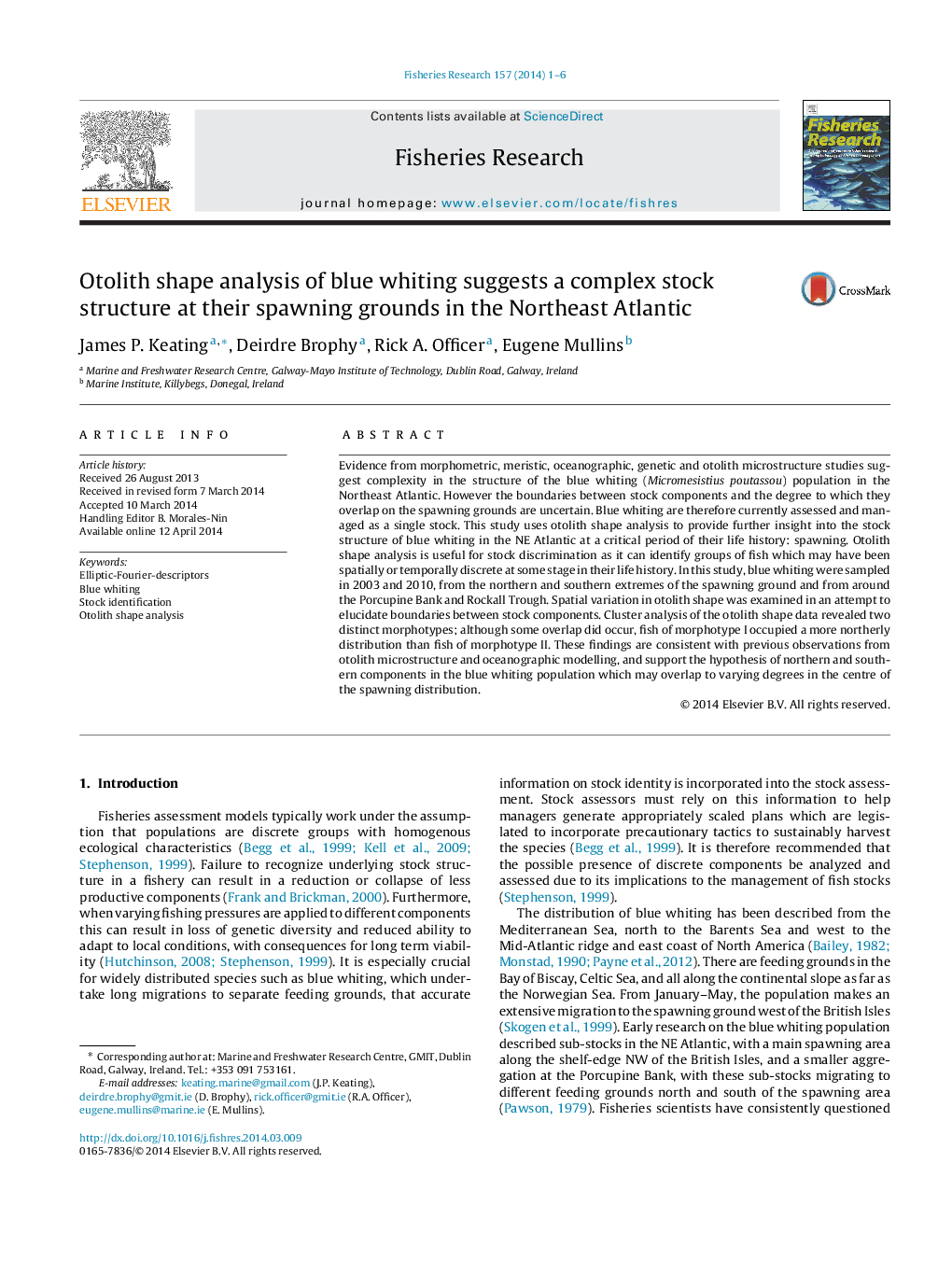| کد مقاله | کد نشریه | سال انتشار | مقاله انگلیسی | نسخه تمام متن |
|---|---|---|---|---|
| 4543034 | 1626811 | 2014 | 6 صفحه PDF | دانلود رایگان |

Evidence from morphometric, meristic, oceanographic, genetic and otolith microstructure studies suggest complexity in the structure of the blue whiting (Micromesistius poutassou) population in the Northeast Atlantic. However the boundaries between stock components and the degree to which they overlap on the spawning grounds are uncertain. Blue whiting are therefore currently assessed and managed as a single stock. This study uses otolith shape analysis to provide further insight into the stock structure of blue whiting in the NE Atlantic at a critical period of their life history: spawning. Otolith shape analysis is useful for stock discrimination as it can identify groups of fish which may have been spatially or temporally discrete at some stage in their life history. In this study, blue whiting were sampled in 2003 and 2010, from the northern and southern extremes of the spawning ground and from around the Porcupine Bank and Rockall Trough. Spatial variation in otolith shape was examined in an attempt to elucidate boundaries between stock components. Cluster analysis of the otolith shape data revealed two distinct morphotypes; although some overlap did occur, fish of morphotype I occupied a more northerly distribution than fish of morphotype II. These findings are consistent with previous observations from otolith microstructure and oceanographic modelling, and support the hypothesis of northern and southern components in the blue whiting population which may overlap to varying degrees in the centre of the spawning distribution.
Journal: Fisheries Research - Volume 157, September 2014, Pages 1–6